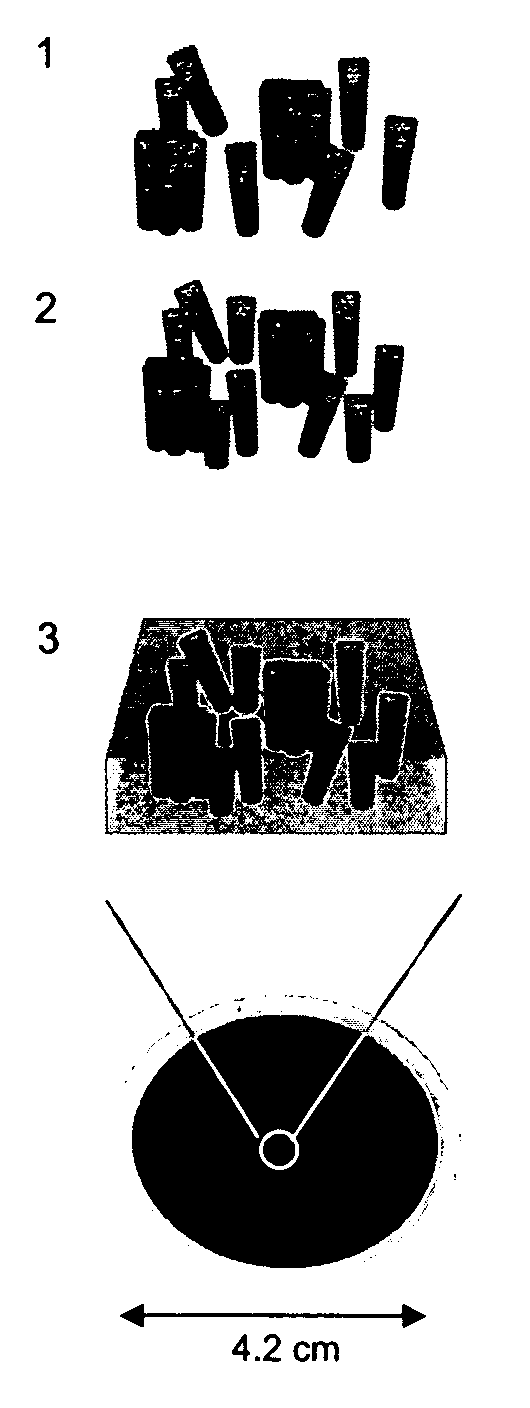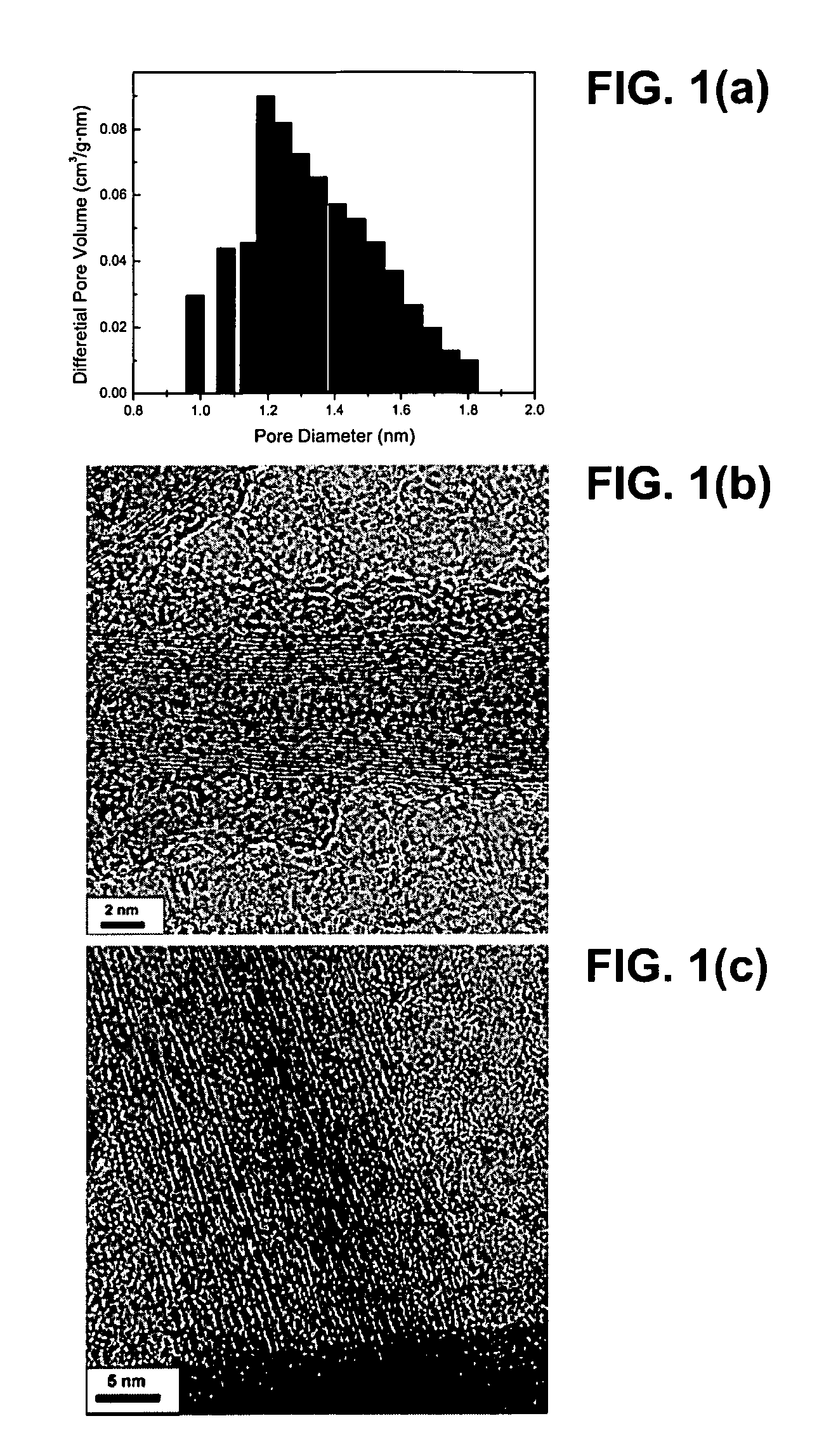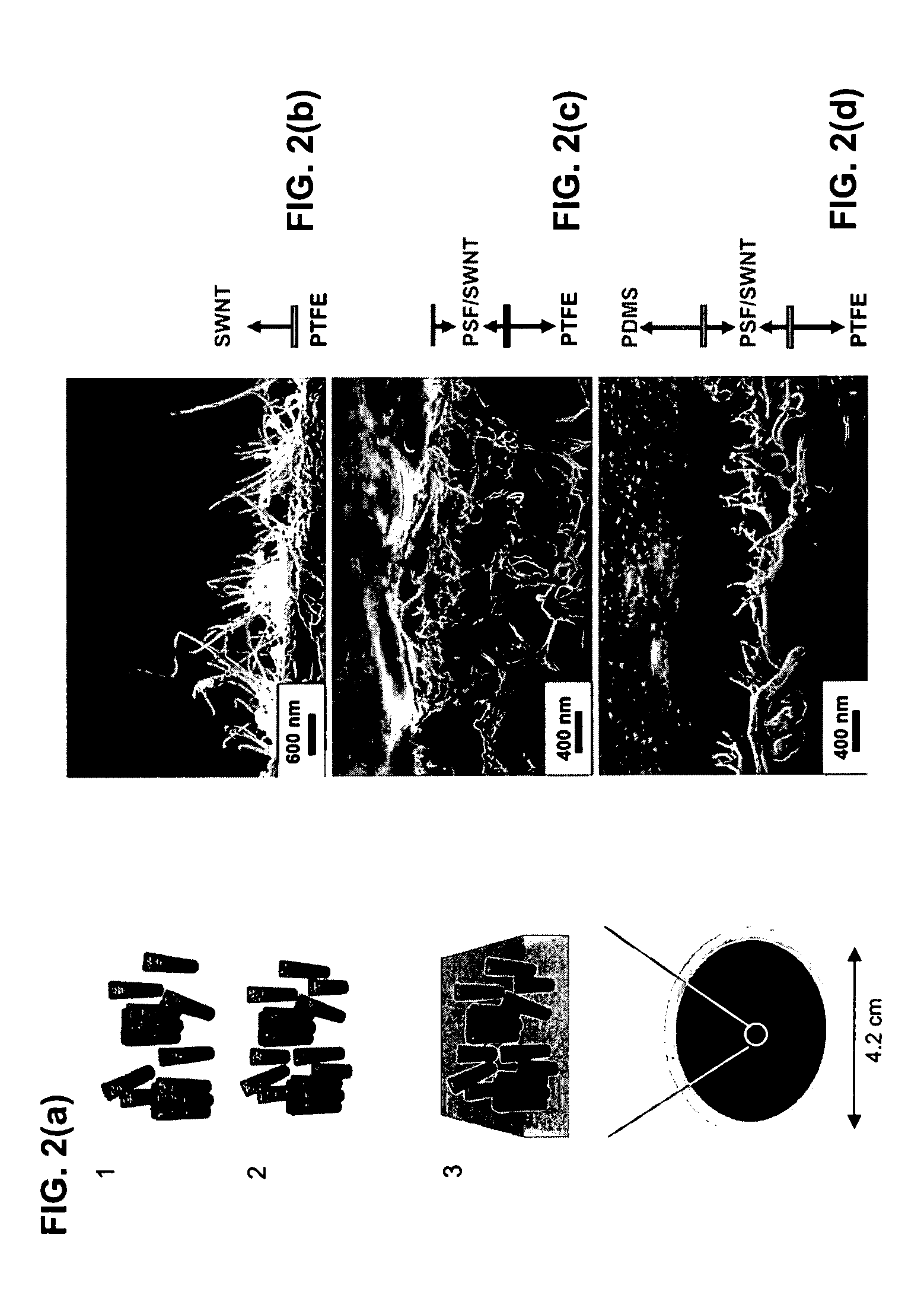Method for making oriented single-walled carbon nanotube/;polymer nano-composite membranes
a carbon nanotube and single-walled technology, applied in the field of nanocomposite membranes, can solve the problems of limited sample fabrication, high cost of process, and laboriousness, and achieve the effect of rapid transport of permeate molecule or compound through the membran
- Summary
- Abstract
- Description
- Claims
- Application Information
AI Technical Summary
Benefits of technology
Problems solved by technology
Method used
Image
Examples
example 1
Preparation of Composite Membranes by Spin Coating
[0052]The transport properties of SWNT / polymer nano-composite membranes fabricated by orienting functionalized SWNT with a filtration method are described herein. It is believed that the alignment of the SWNT results from a self-assembly mechanism directed by the shear forces of the flowing solvent stream in combination with repulsive forces between the carbon nanotubes and the nearby membrane filter surface. It has been reported that shear forces align SWNTs in the flow direction.17 The SWNTs samples orient in shear flow and propagate their perpendicular alignment to the filter substrate via long range repulsive forces that exist between the zwitterions attached to the carbon nanotube surface. This phenomena is similar to the orientation behaviour of rigid rodlike polyelectrolytes near charged surfaces.18
A. Preparation of CNTs
[0053]Methods
[0054]Electric arc-discharged SWNTs were purchased from Carbon Solutions, Inc. (Riverside, Cal...
example 2
Preparation of Composite Membranes by Filter Inversion
A. Experimental and Characterization Method
[0074]Functionalization of Carbon Nanotubes
[0075]Electric arc-discharged single-walled carbon nanotubes (SWNTs) were purchased from Carbon Solutions, Inc. (Riverside, Calif.). Raw carbon nanotube materials produced by electric arc method were treated by multistage purification method (a combination of wet-oxidation and acid treatments) to purify CNTs from impurities and cut into small length with 3:1 mixture of concentrated H2SO4 (98 vol %):HNO3(70% vol %) solution. The details of the purification and cutting method are described elsewhere.19,40,44,45 Nitrogen sorption isotherms at 77 K were carried out to characterize the pore structure. The pore size of CNTs was calculated using the Horvath-Kawazoe (H-K) model for cylindrical pores.46 To produce soluble SWNTs, formed an octadecylammonium (ODA) and SWNT-Carboxylate zwitterions was formed by the following procedure.41,42 Shortened SWNTs ...
example 3
Method for Dispersing and Aligning CNTs Using Surfactant
[0095]A nanotube dispersion with a concentration of 0.01 mg / ml was mixed with surfactant (e.g. sodium dodecylsulfonate, sodium dodecylbenzenesulfonate).47 The optimum CNT-surfactant ratio can be varied from 1:5 to 1:15. The suspension was sonicated for 2 days. The high concentration of the CNT suspension (20 ml)was diluted with deionized water (50 ml). The low concentration CNT suspension (10 ml) was filtered through membrane filter. The filter was rinsed several times to remove surfactant on the CNTs. The aligned CNTs were then dried at room temperature.
PUM
| Property | Measurement | Unit |
|---|---|---|
| diameters | aaaaa | aaaaa |
| pore size | aaaaa | aaaaa |
| diameter | aaaaa | aaaaa |
Abstract
Description
Claims
Application Information
 Login to View More
Login to View More - R&D
- Intellectual Property
- Life Sciences
- Materials
- Tech Scout
- Unparalleled Data Quality
- Higher Quality Content
- 60% Fewer Hallucinations
Browse by: Latest US Patents, China's latest patents, Technical Efficacy Thesaurus, Application Domain, Technology Topic, Popular Technical Reports.
© 2025 PatSnap. All rights reserved.Legal|Privacy policy|Modern Slavery Act Transparency Statement|Sitemap|About US| Contact US: help@patsnap.com



